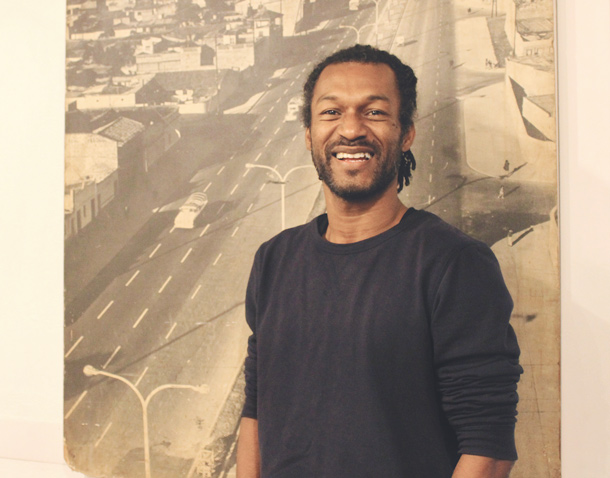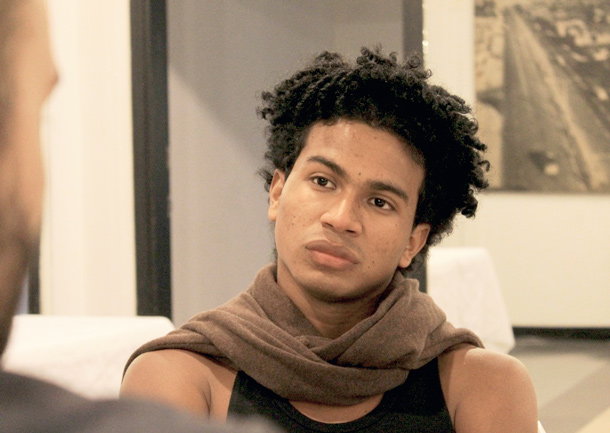 Daniel Caicedo caught up with some of the Colegio del Cuerpo dancers as they prepared for their show in Bogota
Daniel Caicedo caught up with some of the Colegio del Cuerpo dancers as they prepared for their show in Bogota
We in Colombia like to pride ourselves on our dancing. It is one of our major claims to fame on the world stage. But for all our peacocking over this, the fact is that dancing is still viewed with an enormous amount of disdain by some parts of mainstream Colombian society. It is often regarded as a poor man’s affair and a leisure activity, rather than a serious cultural, artistic, professional, and even spiritual enterprise.
Colegio del Cuerpo seeks to change that, though. What started as an initiative to empower youths and young adults from disadvantaged backgrounds is now more about the idea of convergence; the union of separate bodies into one, the annihilation of boundaries that separate us from them, this from that, here from there.
The way American dancer Elissa Marshall, 27, describes it, being a dancer is hard, so it’s easy sometimes to forget that dancing at its heart is supposed to be fun. It is supposed to make you happy. That is what Colegio del Cuerpo has really taught her – to mix a disciplined mind with joy and spontaneity. Before El Colegio, it was all work and no play, as she had endured the classical training of a ballet dancer in university.
Working with El Colegio on a professional exchange taught her to laugh again, to make a joke or two. And it showed her that, “Working hard can be fun. Being rigorous can be awesome”.
When I ask about her unique experience of being El Colegio del Cuerpo’s only foreign dancer, Elissa explains, “The difficulties of growing up and being a grown up are universal. It’s not a question of being rich or poor, native or foreign. We’re all in the same boat”.
- Ricardo
- Elissa
- Alexis
This idea rings true as I speak to thirty-four-year-old Ricardo, who is the polar opposite of Elissa. A native of Cartagena, he grew up in the poorer side of the city and faced a different challenge altogether; where he had been trained in traditional Colombian rhythms and Afro-Caribbean beats, El Colegio del Cuerpo specialises in contemporary dance.
Contemporary dancing borrows from everything and holds nothing sacred, and working with El Colegio is almost a dialogue between choreographers and dancers, with lots of room for experimentation and trying new things.
Mayerlis Romero, 24, tells me, “Dancers aren’t little robots for choreographers to program, they’re people. And being a good dancer is showing that on stage. Showing your humanity.”
El Colegio also teaches its dancers to be passionate, to love what they do. “Why can’t we have a life beyond our work, friends, and family?” In a society that often requires girls like Mayerlis to stay at home, take care of her siblings, or work to bring in money for the family’s rent, and often to get married, have kids to repeat the cycle; it is immensely important to teach a person that they are allowed to be more than the sum of their parts.
 Alexis, another dancer, explains, “[Dancing] teaches us to listen and convey our own ideas. Knowledge means nothing if you can’t share it.” This is a rather poignant thought – while many Colombians often feel they go unheard and over time learn to simply save themselves the trouble of speaking, to have a space where it is safe to express controversial ideas and defy the status quo and engage in a positive way is very powerful.
Alexis, another dancer, explains, “[Dancing] teaches us to listen and convey our own ideas. Knowledge means nothing if you can’t share it.” This is a rather poignant thought – while many Colombians often feel they go unheard and over time learn to simply save themselves the trouble of speaking, to have a space where it is safe to express controversial ideas and defy the status quo and engage in a positive way is very powerful.
El Colegio is clearly making a difference in the lives of underprivileged youth. But the mission has changed to open up and involve a more varied mix of people. Not just the poor and underprivileged, but also the rich and affluent too, in a place where they can all share as equals. After all, dancing is all about that: becoming one.
It seems fitting, though, given the central theme of El Colegio’s latest production is the “coming together of the human and the divine”. That’s the opportunity that El Colegio del Cuerpo provides: being one with your body, being one with El Colegio, being one with Colombia, being one with the world, being one with dancing.
Photos: J. Sebastian Castro Gomez
By Daniel Caicedo







